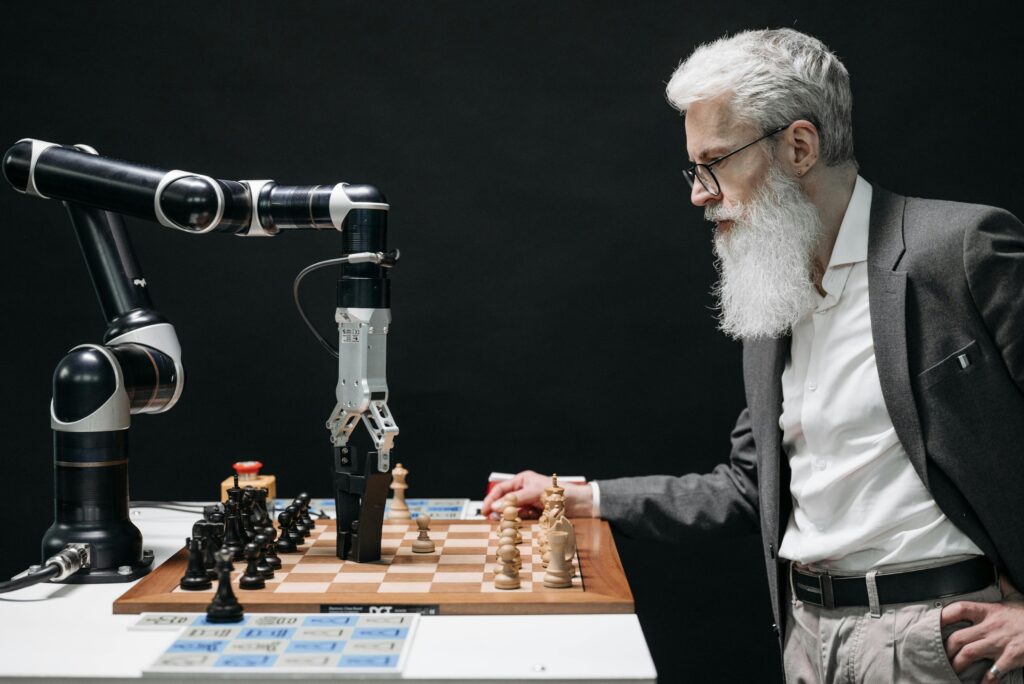The Growing Role of AI in Modern Gaming
Artificial intelligence has become the backbone of contemporary game development, revolutionizing how players interact with virtual worlds. From sophisticated non-player characters (NPCs) that learn from player behavior to dynamic storytelling that adapts to individual choices, AI is reshaping gaming at a fundamental level. However, this technological leap forward comes with profound ethical considerations that the industry is only beginning to confront.

The integration of AI in gaming extends far beyond simple automation. Modern systems employ machine learning algorithms that analyze thousands of data points per second – tracking everything from how long a player hesitates before making a decision to subtle changes in their play style over time. This unprecedented level of player profiling enables incredibly personalized experiences but also raises serious questions about consent, manipulation, and digital rights.
As we examine these issues, it’s crucial to understand that AI in gaming isn’t just about better graphics or smarter enemies. It represents a fundamental shift in how games are designed, monetized, and experienced. The ethical implications touch on psychology, economics, labor markets, and even philosophical questions about what constitutes fair play in an era where the game itself is constantly adapting to beat you.
Section 1: The Psychology of Player Manipulation – When Engagement Becomes Exploitation
The Neuroscience Behind Addictive Game Design
Modern game AI doesn’t just respond to players – it actively studies them. Using principles from behavioral psychology and neuroscience, developers create systems that trigger the brain’s reward pathways with surgical precision. Dopamine release schedules are carefully calibrated through variable reward systems, where players receive unpredictable but frequent enough rewards to maintain engagement.
The most concerning applications involve:
- Dynamic difficulty adjustment that secretly tweaks game parameters based on real-time analysis of player frustration levels
- Personalized microtransaction prompts timed to appear when players are most vulnerable (after a loss or during an achievement high)
- Social obligation mechanics where AI-controlled characters simulate friendships to create artificial emotional bonds
Case Studies in Manipulative Design
Several high-profile games have faced criticism for their use of AI-driven manipulation:
- Mobile gacha games that employ complex algorithms to determine when players are most likely to spend money on random item draws
- Battle royale titles that use engagement-optimized matchmaking to create “perfect” losing streaks that motivate spending
- Single-player RPGs where AI directors alter story outcomes based on detected player attachment to certain characters
The Ethical Line Between Engagement and Exploitation
While player retention is a legitimate business goal, current practices often cross into psychological manipulation. The key ethical questions include:
- Should games disclose when and how they’re adjusting difficulty to manipulate emotions?
- At what point does personalized content become predatory behavioral conditioning?
- Do players truly understand they’re being psychologically profiled in real time?
Industry guidelines remain woefully inadequate in addressing these concerns, leaving developers to self-regulate in an environment where increased engagement directly translates to higher profits.
Section 2: Data Privacy in AI Gaming – The Hidden Cost of Personalization
The Scope of Data Collection in Modern Games
Contemporary gaming AI systems collect staggering amounts of personal data, including:
- Behavioral biometrics: Reaction times, decision-making patterns, and even physiological responses through connected devices
- Social graphs: Complete mappings of player relationships and influence networks
- Economic profiles: Spending habits, price sensitivity, and susceptibility to different monetization tactics
Advanced titles now incorporate:
- Voice analysis to detect emotional states
- Eye-tracking data from VR systems
- Cross-platform activity monitoring that extends beyond the game itself
Emerging Privacy Risks and Real-World Consequences
The aggregation of this data creates unprecedented privacy concerns:
- Profiling vulnerabilities: AI can identify players with addictive tendencies or mental health vulnerabilities
- Cross-platform tracking: Many games incorporate data from social media and other apps to build comprehensive profiles
- Secondary data markets: Player information is often sold to third parties with minimal transparency
Recent incidents have demonstrated how this data can be misused:
- Targeted harassment using voice chat analysis
- Discrimination in matchmaking based on inferred characteristics
- Real-world consequences from leaked gaming behavior data
Legal Frameworks and Their Limitations
Current regulations like GDPR and CCPA provide some protections but fail to address gaming-specific issues:
- The illusion of consent: End-user agreements are often incomprehensible and buried in lengthy terms
- Data minimization challenges: Many AI systems require massive datasets to function effectively
- Jurisdictional conflicts: Global player bases face inconsistent protections across regions
Emerging solutions include:
- Privacy-preserving AI techniques like federated learning
- Blockchain-based ownership of personal gaming data
- Standardized data collection disclosures specifically for interactive entertainment
Section 3: The Labor Impact – How AI is Reshaping Game Development Jobs
The Automation of Creative Professions
AI is transforming game development workflows in ways that threaten traditional roles:
- Procedural content generation now creates entire worlds, reducing need for level designers
- AI-assisted animation automates up to 70% of routine character motions
- Automated quality assurance can test thousands of scenarios simultaneously
Specific impacts include:
- Entry-level positions being eliminated first, creating a “missing rung” in career ladders
- Specialized artists competing with AI tools that can generate concept art in seconds
- Narrative designers adapting to systems that dynamically generate quests and dialogue
Case Study: The Voice Acting Controversy
Recent advances in voice synthesis AI have sparked industry-wide debates:
- Digital voice cloning allows one actor’s performance to be adapted infinitely
- Union negotiations now include AI usage clauses
- Ethical concerns about consent and compensation for training data
The Screen Actors Guild has reported:
- 42% of video game voice actors have encountered unauthorized use of their voice prints
- New contracts requiring explicit permission for AI training
- Growing demand for “AI rider” provisions in performance contracts
Economic Implications and Potential Solutions
The labor market impacts extend beyond immediate job losses:
- Wage suppression in remaining roles due to increased competition
- Skill gaps as traditional training becomes obsolete
- Creative homogenization from over-reliance on AI tools
Potential mitigation strategies include:
- Reskilling programs focused on AI collaboration
- New royalty models for AI-assisted content creation
- Creative certification systems to distinguish human-led projects
Section 4: Algorithmic Bias in Gaming AI – Reinforcing Real-World Inequalities
How Prejudices Become Embedded in Game Systems
AI systems often perpetuate and amplify existing societal biases:
- Character generation algorithms that default to racial stereotypes
- Behavioral prediction models that penalize non-Western play styles
- Moderation systems that disproportionately flag certain dialects or speech patterns
Documented examples include:
- Fighting games where hit detection favors certain character models
- NPC interactions that change based on perceived player demographics
- Matchmaking systems that segregate players along socioeconomic lines
The Consequences of Biased Gaming Systems
These issues create tangible harms:
- Reinforcement of stereotypes through repeated in-game interactions
- Exclusion of marginalized players from competitive spaces
- Normalization of prejudiced behaviors through AI responses
Psychological studies have shown:
- Players internalize biases encountered in game AI
- Repeated exposure affects real-world perceptions
- Children are particularly vulnerable to these influences
Towards More Equitable Gaming AI
Developing fairer systems requires:
- Diverse training datasets that represent global player bases
- Bias auditing protocols throughout development cycles
- Player customization options that override algorithmic decisions
Industry leaders are exploring:
- Open-source bias detection tools
- Crowdsourced fairness evaluations
- Ethical AI certification programs
Section 5: The Mental Health Impact of AI-Optimized Games
Understanding the Addiction Mechanisms
Modern game AI employs sophisticated techniques to maximize engagement:
- Loss aversion engineering that creates perfect frustration-reward balances
- Social obligation algorithms that simulate peer pressure
- Personalized play schedules that identify optimal times for notifications
Neuroscience research reveals:
- AI-optimized games trigger addiction pathways similarly to gambling
- Adolescent brains are particularly susceptible to these designs
- Withdrawal symptoms comparable to substance dependencies
Emerging Therapeutic Concerns
Mental health professionals report:
- Rising cases of gaming disorder directly tied to AI personalization
- Difficulty treating patients due to constantly adapting game systems
- New forms of digital self-harm through abusive AI interactions
Particularly concerning trends include:
- AI bots designed to exploit loneliness
- Dynamic difficulty that prevents natural stopping points
- Monetization of compulsive behaviors
Potential Safeguards and Interventions
Possible protective measures:
- Mandatory playtime tracking with hard limits
- Transparency in engagement optimization
- Clinical guidelines for AI



